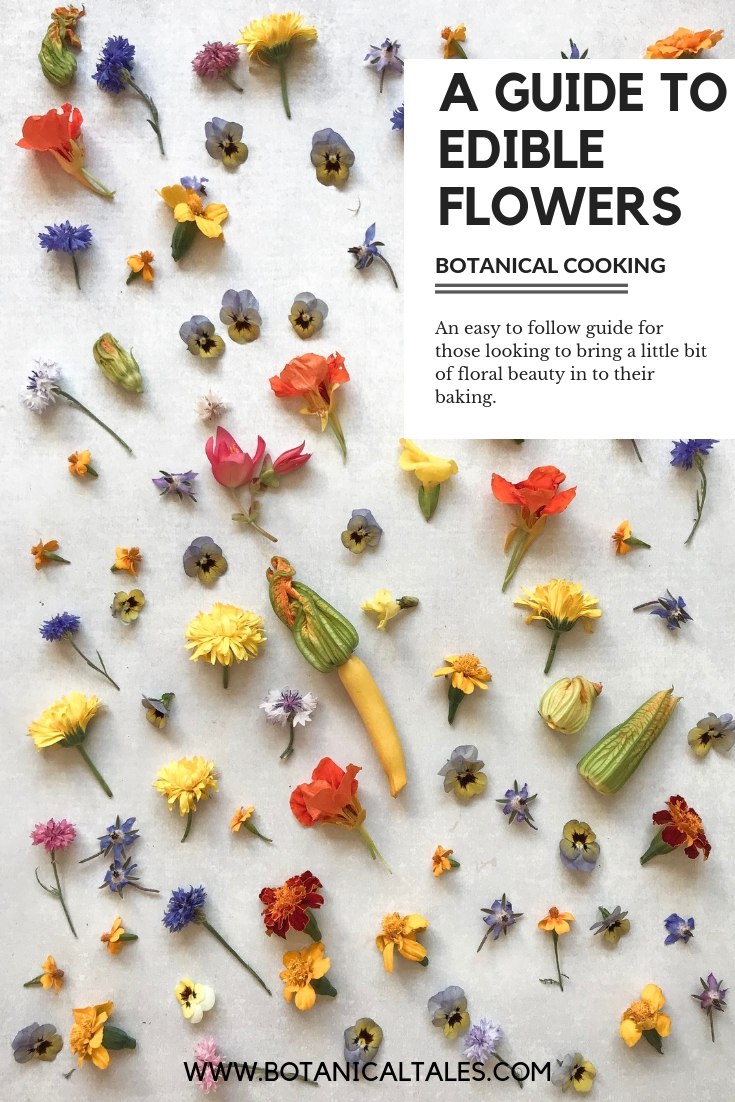A Guide to Edible Flowers
My first job as a chef was for an inspiring lady called Penny, who grew all of her flowers to use as decoration at her parties and functions. I didn’t really bat an eye lid at it when I started working for her but I vividly remember many guests at weddings gingerly lifting nasturtiums and violas off their plate as they asked the waitresses and waiters if they were really edible, as if we would have put something that wasn’t edible on their plate! Looking back, I realise now that Penny was really ahead of her times and she has influenced me in so many ways, as I continue to use edible flowers and foliage in much of my baking.
Recently edible flowers are having a sort of revival and becoming more popular at weddings for example. You can now buy them in Sainsbury’s as well as specialist online stores. They are also super easy to grow and make beautiful bedding plants which benefit from deadheading meaning you encourage more growth from the plants the more flowers you pick. You can grow most of these flowers in the tiniest of spaces, no allotment or country garden required, pots on a window sill or balcony will suffice.
I have put together a list of my favourite and most common edible flowers as a starting guide to anyone who wishes to take the leap in to botanical baking. Please always err on the side of caution when eating plants though, you must be absolutely sure that what you are eating is the true plant as many plants in the UK can be poisonous, if in doubt don’t eat it!
Nasturtiums:
These are probably the most flavoursome of the list and make a wonderful edition to a fresh summer salad. Beautiful colours they grow prolifically and are great fun for the kids too, just make sure you check for earwigs inside the back horn of the flower. The young leaves are also edible.
Cornflower:
These come in a variety of colours and especially love using these to decorate cakes and bakes as they don’t tend to wilt too quickly. They remind me a little of cloves in flavour and are slightly sweet. Sprinkle their petals over eaton mess for a stunning display.
Marigolds:
I adore the petals of these pulled from the flower and sprinkled over my botanical biscuits prior to baking, they lose their vibrant colour but fade to a soft gold that is so delicate. The flavour is slightly citrus and can be a little spicy. The petals stay looking good for many hours so again make a great edition to a summer salad.
Calendula:
This unassuming bloom has many hidden uses including for medicinal purposes. The petals of these are perfect sprinkled over salad and also in a fresh mint tea. They are great to grow alongside other flowers and plants as they are thought to repel other pests, this is why you often see allotment growers with rows of calendula on their plot.
Violas and Pansies:
These are absolute stunners because of their breadth of colour and varieties, they also have an incredibly long flowering season which makes them a must have for an edible flower grower. I always pinch off the green backing of the flower to leave the petals, but that is personal preference. These survive the oven quite well so can be added to biscuits before baking
Borage:
This is a slightly larger plant that would do best in a garden or allotment and has so many benefit besides being edible. The pretty blue flowers change colour once they are pollenated by bees, which absolutely adore the nectar. The flowers themselves should be lifted off the back slightly furry stalks and can then be sprinkled over salads. They tend to wilt quite quickly (as you can see from this photo) so best to pick and then immediately use.
This is just the start but gives you plenty to play with. I’ll be lots more botanical bakes and edible flower recipes and guides with you, so in the meantime let me know if there is anything you would like to learn more about and I’ll try to share! As a starter, take a look at my pressed flower pasta recipe here, so beautiful!
PIN IT FOR LATER









